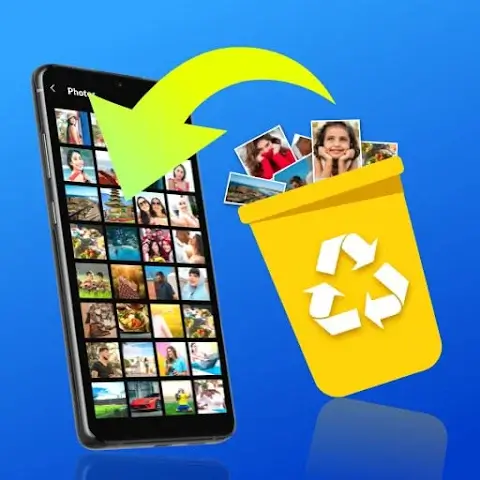In today’s digital age, our smartphones have become an essential part of our lives. We rely on them to store important files, documents, and precious memories captured in the form of photos and videos. However, there are instances where we unintentionally delete or lose these valuable files, leaving us in a state of panic and despair. This is where file recovery and photo recovery apps come to the rescue, offering a lifeline to retrieve our lost data. In this article, we will explore the world of file recovery and photo recovery apps specifically designed for Android devices, highlighting their importance and providing a step-by-step guide on how to install them.
| Version | 1.1.8.2 |
|---|---|
| Updated on | 04-May-2023 |
| Requires Android | 5.1 and up |
| Downloads | 5,000,000+ downloads |
| Content rating | Everyone Learn more |
| Permission | View details |
| Released on | 05-Sept-2022 |
| Offered by | AI Photo Team |
Understanding File Recovery and Photo Recovery
File recovery refers to the process of retrieving deleted or lost files from storage media, such as internal memory or SD cards. It involves scanning the device’s storage for remnants of deleted files and reconstructing them to make them accessible again. On the other hand, photo recovery focuses specifically on recovering deleted or lost photos and images.
Importance of File Recovery and Photo Recovery
The importance of file recovery and photo recovery cannot be overstated. Losing crucial files, whether due to accidental deletion, system crashes, or other unforeseen circumstances, can lead to significant stress and frustration. These apps act as a safety net, providing a chance to recover important documents, work files, cherished memories, and other valuable data.
Common Causes of Data Loss
Understanding the common causes of data loss can help us take preventive measures and appreciate the necessity of file recovery and photo recovery apps. Some of the most common causes include:
1. Accidental Deletion
We’ve all been there—accidentally deleting files or photos that we didn’t mean to. Whether it’s due to a slip of the finger or mistakenly selecting the wrong option, accidental deletions happen frequently.
2. System Crashes or Errors
Software glitches, system crashes, and errors can lead to the loss of files and photos. These issues may occur due to software conflicts, outdated operating systems, or other technical problems.
3. Virus or Malware Attacks
Viruses and malware can wreak havoc on our devices, causing data corruption or deletion. Malicious software can delete files or render them inaccessible, making file recovery essential.
4. Hardware or Software Failure
Hardware or software failures can result in data loss. This can occur due to issues with the device’s storage, faulty components, or software malfunctions.
File Recovery and Photo Recovery Solutions
File recovery and photo recovery apps offer a convenient and efficient solution to restore lost data. These apps utilize advanced algorithms and scanning techniques to locate deleted files and recover them. Let’s explore the benefits of using file recovery and photo recovery apps:
Overview of File Recovery Apps
File recovery apps are designed to recover a wide range of file types, including documents, videos, audio files, and more. They employ deep scanning methods to search for traces of deleted files and provide options for selective recovery.
Benefits of Using File Recovery Apps
- Simplicity: File recovery apps are easy to use, even for non-technical users. They provide a straightforward process to recover lost files without requiring specialized knowledge.
- Time-Saving: These apps save valuable time by automating the scanning and recovery process, eliminating the need for manual file searching and reconstruction.
- Selective Recovery: File recovery apps offer the flexibility to choose specific files for recovery, ensuring that only the desired data is restored.
- Preview Functionality: Many file recovery apps provide a preview feature, allowing users to view recovered files before restoring them.
- Compatibility: These apps are compatible with various storage media, such as internal storage, external SD cards, and USB drives.
Introduction to Photo Recovery Apps
Photo recovery apps focus specifically on retrieving deleted or lost photos and images. They employ specialized algorithms to scan for image signatures and reconstruct the photos for recovery.
Advantages of Photo Recovery Apps
- Image-Specific Recovery: Photo recovery apps excel in recovering images and offer enhanced algorithms to ensure the successful retrieval of photos.
- User-Friendly Interface: These apps provide a user-friendly interface with intuitive controls, making it easy to navigate and recover lost photos.
- Quick Scan: Photo recovery apps often feature a quick scan option to swiftly locate recently deleted photos, minimizing the scanning time.
Features to Look for in File Recovery and Photo Recovery Apps
When selecting a file recovery or photo recovery app, it’s important to consider the following features:
User-Friendly Interface
An intuitive and user-friendly interface ensures a seamless recovery process, even for users with limited technical knowledge.
File Format Compatibility
The app should support a wide range of file formats to ensure compatibility with various types of files and documents.
Deep Scanning Capability
Deep scanning capabilities enable the app to thoroughly search the device’s storage for deleted files, increasing the chances of successful recovery.
Selective Recovery Options
Selective recovery allows users to choose specific files or folders to recover, preventing unnecessary restoration of irrelevant data.
Preview Functionality
The ability to preview recovered files, especially images, provides assurance that the correct files are being restored.
Security and Privacy Measures
Ensure that the app prioritizes data security and privacy, protecting your recovered files from unauthorized access or data breaches.
Step-by-Step Guide: How to Install a File Recovery and Photo Recovery App on Android
Follow these steps to install a file recovery or photo recovery app on your Android device:
Step 1: Go to Google Play Store
Open the Google Play Store app on your Android device.
Step 2: Search for the App
In the search bar, type the name of the file recovery or photo recovery app you want to install.
Step 3: Click on Install
Select the app from the search results and click on the “Install” button.
Step 4: Grant Necessary Permissions
Allow the app to access the necessary permissions, such as storage access, to perform file recovery or photo recovery tasks.
Step 5: Launch the App
Once the installation is complete, you can launch the app from your device’s home screen. Follow the on-screen instructions to begin recovering your lost files or photos.
Conclusion
File recovery and photo recovery apps play a vital role in retrieving lost or deleted files and photos on Android devices. By understanding the causes of data loss, the importance of these apps, and the key features to look for, users can choose the most suitable app for their needs. With a step-by-step guide on installing these apps, users can quickly and efficiently recover their valuable data and cherish their memories once again.
FAQs
1. Is file recovery possible on Android?
Yes, file recovery is possible on Android devices by using dedicated file recovery apps specifically designed for the platform.
2. Can photo recovery apps retrieve deleted images?
Yes, photo recovery apps are specifically designed to retrieve deleted or lost images and photos from Android devices.
3. How long does the scanning process take?
The scanning process duration may vary depending on the size of the storage, the number of files to be scanned, and the app’s scanning capabilities. Generally, it can range from a few minutes to several hours.
4. Are file recovery apps safe to use?
Reputable file recovery apps are safe to use, but it’s essential to download them from trusted sources like the Google Play Store to minimize the risk of downloading malicious apps.
5. Is it necessary to root my Android device for file recovery?
Rooting an Android device can enhance the file recovery process and provide access to a broader range of recoverable files. However, many file recovery apps can also function without root access, albeit with certain limitations on file recovery capabilities.




